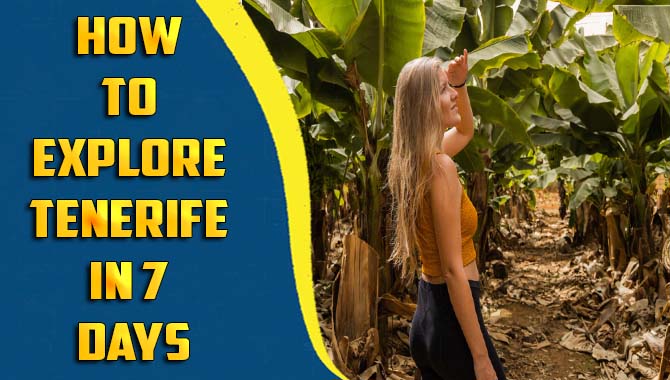Planning a Bhutan 3-day itinerary is achievable for a glimpse into the magical Kingdom. This essential guide provides a realistic plan focusing on key highlights, making your short trip unforgettable. We simplify the process to ensure comfort and clear understanding.
Welcome to the Land of the Thunder Dragon! Bhutan, a Himalayan kingdom known for its Gross National Happiness index, stunning landscapes, and vibrant culture, often seems distant and exclusive. Many travelers dream of visiting but might feel intimidated by the planning, especially for a shorter trip. If you have just three days, you might wonder if it’s even possible to experience its magic. The good news is, yes, it is! This guide is designed to help you craft a fulfilling three-day adventure, focusing on the most accessible and iconic attractions. We’ll break down the essentials, making your Bhutanese sojourn smooth and stress-free. Get ready to discover ancient monasteries, breathtaking valleys, and the warm spirit of Bhutanese hospitality. Let’s start planning your perfect short escape!
Your Bhutan 3-Day Itinerary: A Glimpse of the Dragon Kingdom
Bhutan’s unique appeal lies in its preserved traditions and pristine environment. While three days is a brief period, it’s enough to capture the essence of this enchanting nation, particularly if your visit focuses on the western valleys where most major attractions are located. This itinerary is designed for travelers who want to maximize their short visit, experiencing cultural landmarks and natural beauty without feeling rushed.
To visit Bhutan, travelers (except Indian, Bangladeshi, and Maldivian nationals) must book through a licensed Bhutanese tour operator and pay a Sustainable Development Fee (SDF) per night. This fee contributes to Bhutan’s development and helps maintain its breathtaking environment. For the latest SDF details and visa requirements, always refer to the official Royal Government of Bhutan website.
Day 1: Arrival in Paro & Thimphu Exploration
Your journey begins upon arrival at Paro International Airport (PBH), the only international airport in Bhutan, nestled in a picturesque valley. The descent into Paro is often described as spectacular, offering aerial views of the Himalayas.
Morning: Arrival and Transfer to Thimphu
Arrival at Paro Airport (PBH): You’ll be greeted by your Bhutanese guide.
Scenic Drive to Thimphu (approx. 1.5 hours): Enjoy the picturesque drive through terraced fields and charming villages. Thimphu is Bhutan’s capital city, offering a blend of tradition and modernity.
Check-in and Lunch: Settle into your hotel and enjoy your first taste of authentic Bhutanese cuisine.
Afternoon: Thimphu Cultural Immersion
Buddha Dordenma: Visit this giant, seated Buddha statue offering panoramic views of the Thimphu valley. It’s a truly serene spot.
Takin Preserve: See the unique national animal of Bhutan, the Takin, a creature with the head of a goat and body of a cow.
Folk Heritage Museum/National Textile Museum: Gain insight into Bhutanese rural life and the intricate art of traditional weaving. The Textile Museum is especially fascinating for its display of royal garments and the stories behind them.
Evening: Thimphu City Exploration & Dinner
Main Street Stroll: Wander through the vibrant streets of Thimphu, observing local life and perhaps picking up some souvenirs.
Dinner: Enjoy a traditional Bhutanese meal at a local restaurant. Don’t miss Ema Datshi, the national dish!
Day 2: Thimphu Landmarks & Return to Paro
Today, you’ll explore more of Thimphu’s significant sites before heading back to Paro, where you’ll prepare for your iconic hike tomorrow.
Morning: Thimphu’s Spiritual and Artistic Sites
National Memorial Chorten: A prominent landmark where locals circumambulate, murmuring prayers. It’s a hub of spiritual activity.
Zorig Chusum (School of 13 Arts and Crafts): Witness students learning ancient Bhutanese art forms like painting, wood carving, and embroidery.
Post Office (Philatelic Bureau): If you’re interested, you can get personalized Bhutanese stamps with your photo on them – a unique souvenir!
Afternoon: Drive to Paro & Relaxation
Lunch in Thimphu.
Drive back to Paro (approx. 1.5 hours): Enjoy the return journey, perhaps stopping at viewpoints you missed on the way.
Check-in to Paro Hotel: Get settled and rest.
Evening: Preparing for Tiger’s Nest & Local Exploration
Paro Town: Explore Paro town, smaller and more laid-back than Thimphu.
Early Dinner: Enjoy dinner and get a good night’s sleep, as tomorrow involves an invigorating hike.
Day 3: Hike to Tiger’s Nest Monastery & Departure
The highlight of many Bhutan trips, the hike to Taktsang Monastery (Tiger’s Nest) is an unforgettable experience.
Morning: The Iconic Tiger’s Nest Hike
Breakfast: Have an early, hearty breakfast at your hotel.
The Hike to Taktsang Monastery: This hike is the crescendo of your short trip. It takes about 2-3 hours to reach the monastery, depending on your pace. The trail is well-maintained, with prayer flags fluttering along the way. There’s a cafeteria halfway up offering stunning views and a place to rest.
Difficulty: Moderate. The altitude can be a factor, so take it slow and steady.
What to Wear: Comfortable hiking shoes, layers of clothing, and water.
What to Bring: A camera, water bottle, and snacks are recommended.
Explore Taktsang Monastery: Once you reach the monastery, you’ll be mesmerized by its architecture clinging to the cliffside and its spiritual significance. Remember to dress modestly (shoulders and knees covered) and cameras are often not allowed inside.
Afternoon: Lunch and Departure
Lunch: Enjoy a well-deserved lunch after your hike, either at the cafeteria or back in Paro.
Transfer to Paro Airport (PBH): Your guide will escort you to the airport for your onward journey.
Essential Considerations for Your 3-Day Bhutan Trip
A short trip demands efficient planning. Here are some key points to keep in mind to ensure your experience is as smooth as buttered noodles.
Visa and Permits
All foreign tourists (excluding Indian, Bangladeshi, and Maldivian nationals) must obtain a visa and pre-book their trip through a legally registered Bhutanese tour operator. The tour operator will handle your visa application. You will need to pay the Sustainable Development Fee (SDF) directly to the government. For the most current information, always consult the Bhutan Ministry of Foreign Affairs.
Sustainable Development Fee (SDF)
This is a mandatory daily fee that contributes to Bhutan’s conservation efforts, healthcare, education, and infrastructure. The SDF amount can change, so verify the latest figures before booking.
What to Pack for 3 Days
Given the short duration, focus on essentials.
Comfortable Clothing: Layers are key as Bhutan’s weather can change. Pack light jackets, sweaters, and long-sleeved shirts.
Hiking Gear: For the Tiger’s Nest hike, sturdy walking shoes or hiking boots are a must. Moisture-wicking socks are also helpful.
Modest Attire: When visiting religious sites, ensure your shoulders and knees are covered. Long pants or skirts are advised.
Sun Protection: Sunscreen, sunglasses, and a hat are essential due to the high altitude.
Personal Items: Include any personal medications. For those who might need them, consider discreet travel solutions like Depend Guards for Men or Always Discreet Blanks Pads for added confidence and comfort during travel, ensuring you’re prepared for any situation without worry.
Camera & Power Bank: To capture those stunning moments!
Small Backpack: Useful for day trips and hikes to carry water, snacks, and your camera.
Currency
The Bhutanese Ngultrum (BTN) is the local currency. Indian Rupees (INR) are also widely accepted. ATMs are available in major towns, but it’s always good to carry some cash. US dollars are generally not accepted outside of major hotels.
Connectivity
While hotels offer Wi-Fi, it can be slow. Consider getting a local SIM card if you need consistent internet access. Mobile coverage is generally good in the valleys.
Food and Accommodation
Expect delicious, often spicy, Bhutanese cuisine. Hotels range from comfortable to luxurious. Your tour package will typically include accommodation and meals.
Bhutan 3-Day Itinerary: Sample Cost Breakdown (2024 Estimate)
Understanding potential costs is crucial for budgeting. This table provides an estimated breakdown, but actual costs will vary based on your chosen tour operator, accommodation level, and travel season.
| Category | Estimated Cost (USD per person per day) | Notes |
| :—————————– | :————————————– | :——————————————– |
| Sustainable Development Fee (SDF) | $100 USD | Mandatory daily fee for tourists. |
| Tour Operator Package | $150 – $250+ USD | Covers guide, driver, vehicle, accommodation, meals, entrance fees. |
| Total Estimated Daily Cost | $250 – $350+ USD | Excludes flights to/from Bhutan, personal expenses. |
Note: The SDF is subject to change. Always verify the latest rates with your tour operator or the official Bhutan tourism website.
Why This Itinerary Works for Short Trips
This itinerary is crafted to:
Maximize time: It focuses on the most accessible and iconic sites in Western Bhutan.
Minimize travel: It concentrates activities within the Paro and Thimphu valleys, reducing long driving days.
Offer key experiences: You’ll see cultural landmarks and the breathtaking Tiger’s Nest.
* Be beginner-friendly: It’s paced to allow for enjoyment without feeling overly demanding.
Frequently Asked Questions About a 3-Day Bhutan Trip
Here are some common questions travelers have when planning a short Bhutanese adventure.
Can I really see Bhutan in just 3 days?
While Bhutan is a destination rich in culture and natural beauty, a 3-day itinerary allows you to experience its highlights, especially in the western valleys of Paro and Thimphu. It provides a wonderful introduction to the country, focusing on key landmarks like Tiger’s Nest Monastery and significant cultural sites.
Do I need a visa and how much is the SDF?
Yes, most foreign nationals require a visa. The visa application is typically processed by your chosen Bhutanese tour operator. All tourists (except those from India, Bangladesh, and Maldives) must pay a Sustainable Development Fee (SDF) per night. The SDF amount is subject to change, so always check the Bhutan Tourism Council for the latest figures.
Is hiking to Tiger’s Nest difficult?
The hike to Tiger’s Nest Monastery (Taktsang) is of moderate difficulty. It takes approximately 2-3 hours round trip, with a significant ascent. The altitude can make it challenging for some. It is important to wear comfortable shoes, stay hydrated, and take breaks as needed. There are rest stops along the trail.
What is the best time of year for a 3-day trip?
The best times to visit Bhutan are spring (March to May) and autumn (September to November). These seasons offer pleasant weather, clear skies, and vibrant festivals. However, even a short trip during other times can be rewarding, with fewer crowds.
What should I pack for a 3-day visit?
Pack layers of comfortable clothing, including sweaters and a light jacket, as temperatures can vary. Good walking shoes for the Tiger’s Nest hike are essential. Modest attire (covering shoulders and knees) is required for all religious sites. Don’t forget sunscreen, sunglasses, a hat, and any personal medications. For added peace of mind during travel, consider bringing TENA Pads for Incontinence if needed.
Will I be able to use my phone and internet?
Mobile phone coverage is generally good in the main towns and valleys. Wi-Fi is available in most hotels, though it can sometimes be slow. If reliable internet is crucial, consider purchasing a local SIM card upon arrival.
Is it necessary to book through a tour operator?
For most nationalities, yes. Bhutan mandates that tourists (excluding those from India, Bangladesh, and Maldives) book their trip through a licensed Bhutanese tour operator. This ensures a structured and regulated travel experience.
Making Your Short Bhutanese Adventure Memorable
A three-day itinerary for Bhutan is a fantastic way to get a taste of this unique kingdom. It’s more than just seeing sights; it’s about experiencing the tranquility, the spirituality, and the warmth of the Bhutanese people. By focusing on the gems of the Paro and Thimphu valleys, you can immerse yourself in the culture, witness breathtaking landscapes, and undertake memorable activities like the hike to the iconic Tiger’s Nest.
Remember, the key to enjoying a short trip is efficient planning and embracing what you can realistically see. Your tour operator will be your best resource for logistics, ensuring your visa, permits, and daily plans are seamlessly arranged. Pack smart, be prepared for the hike, and most importantly, open yourself to the profound sense of peace and happiness that Bhutan is renowned for. With this guide, your essential Bhutan 3-day itinerary is well within reach, promising an unforgettable journey into the heart of the Himalayas. Enjoy every moment of your incredible adventure!




